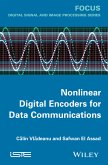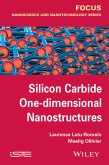Lithography is an extremely complex tool - based on the concept of "imprinting" an original template version onto mass output - originally using relatively simple optical exposure, masking, and etching techniques, and now extended to include exposure to X-rays, high energy UV light, and electron beams - in processes developed to manufacture everyday products including those in the realms of consumer electronics, telecommunications, entertainment, and transportation, to name but a few. In the last few years, researchers and engineers have pushed the envelope of fields including optics, physics, chemistry, mechanics and fluidics, and are now developing the nanoworld with new tools and technologies. Beyond the scientific challenges that are endemic in this miniaturization race, next generation lithography techniques are essential for creating new devices, new functionalities and exploring new application fields. Nanolithography is the branch of nanotechnology concerned with the study and application of fabricating nanometer-scale structures . meaning the creation of patterns with at least one lateral dimension between the size of an individual atom and approximately 100 nm. It is used in the fabrication of leading-edge semiconductor integrated circuits (nanocircuitry) or nanoelectromechanical systems (NEMS). This book addresses physical principles as well as the scientific and technical challenges of nanolithography, covering X-ray and NanoImprint lithography, as well as techniques using scanning probe microscopy and the optical properties of metal nanostructures, patterning with block copolymers, and metrology for lithography. It is written for engineers or researchers new to the field, and will help readers to expand their knowledge of technologies that are constantly evolving.
Dieser Download kann aus rechtlichen Gründen nur mit Rechnungsadresse in D ausgeliefert werden.









